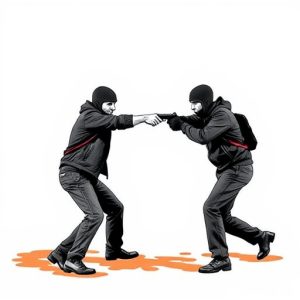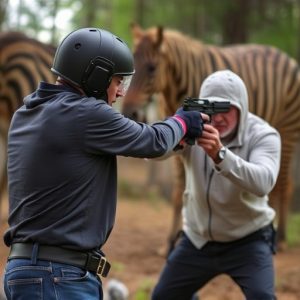Projectile vs Contact Stun Weapons: Finding the Best Concealed Carry Model
This text compares projectile and contact stun weapons for personal defense, highlighting advantages…….
This text compares projectile and contact stun weapons for personal defense, highlighting advantages and disadvantages. Projectile weapons like Tasers offer safe distance, simplicity, and suitability for self-defense, but may be less effective against larger targets and can malfunction in wet conditions. Contact stun tools ensure direct incapacitation but require physical contact, necessitating training. Choosing from the best concealed carry stun gun models requires consideration of power, range, accuracy, and ergonomic design, with legal compliance essential. Brands like Olight and Pepper Shot offer compact, powerful options with advanced features.
In the realm of personal defense, stun weapons have emerged as a game-changer. Understanding the distinction between projectile and contact stun devices is pivotal for choosing the optimal self-defense tool. Projectile weapons offer distance and surprise, while contact stun guns provide immediate control. This article explores these key differences, delving into their advantages and disadvantages. We compare popular concealable stun gun models and guide you in selecting the best concealed carry stun gun based on your needs and preferences.
- Understanding Projectile and Contact Stun Weapons: Key Differences
- Advantages and Disadvantages of Each Weapon Type
- Popular Concealable Stun Gun Models: A Comparison
- Choosing the Best Concealed Carry Stun Gun: Factors to Consider
Understanding Projectile and Contact Stun Weapons: Key Differences
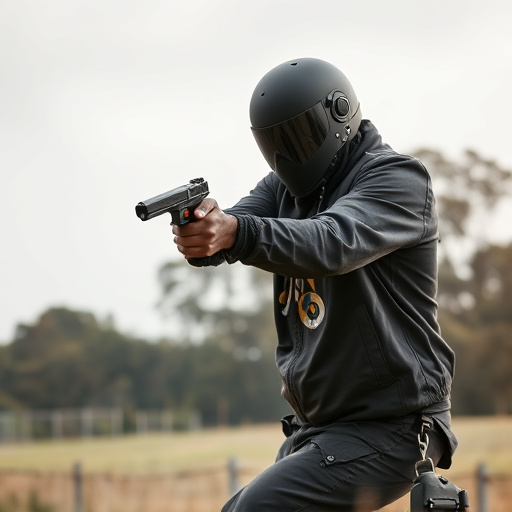
Projectile and contact stun weapons represent two distinct categories in the realm of personal defense devices. Projectile stun guns, such as pepper ball firearms or stun darts, operate by firing a small, non-lethal projectile that delivers a powerful sting when it makes contact with the target’s skin. These weapons are popular choices for self-defense enthusiasts and law enforcement officers due to their effectiveness in incapacitating an aggressor temporarily without causing permanent harm.
On the other hand, contact stun weapons, including traditional stun guns or Tasers, rely on electrical current rather than physical force. They work by delivering a high-voltage, low-current electric shock through two probes that make direct contact with the target’s body. This shock disrupts muscle control, leading to temporary immobilization. Unlike projectile stun weapons, contact stun devices require close proximity and direct contact for optimal effectiveness, making them more suitable for situations where distance is not a factor, such as in close-quarter encounters or during emergency response scenarios involving best concealed carry stun gun models.
Advantages and Disadvantages of Each Weapon Type

Advantages and Disadvantages of Projectile vs Contact Stun Weapons
Projectile stun weapons, such as stun guns or tasers, offer a range of advantages. They can provide a safe distance for users to subdue an assailant, making them ideal for self-defense scenarios where immediate escape is not feasible. Additionally, these weapons are generally easier to use, requiring simply aiming and pulling a trigger. This simplicity makes them attractive for those seeking the most straightforward option among best concealed carry stun gun models. However, they may have limited effectiveness against larger or more aggressive individuals and can be rendered useless in wet conditions due to their reliance on electrical discharge.
Contact stun weapons, including handheld stun batons or electric shields, provide direct contact incapacitation. They are effective for close-quarters combat and can disrupt an attacker’s balance and coordination. These devices also tend to be more durable and less susceptible to environmental factors, making them suitable for various environments. However, they require physical contact with the target, which can be risky if the assailant is armed or aggressive. Moreover, training and practice are often necessary to ensure accurate and effective use, unlike projectile weapons that prioritize ease of operation over precision.
Popular Concealable Stun Gun Models: A Comparison
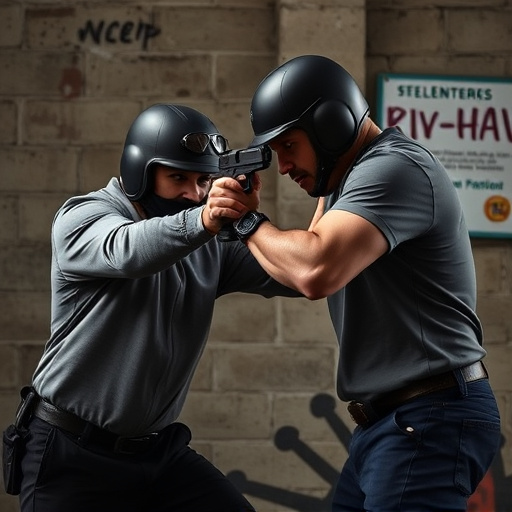
When it comes to choosing the best concealed carry stun gun models, several popular options stand out for their size, power, and effectiveness. These devices offer a discreet way to protect yourself in various situations, from personal safety to law enforcement applications. One leading brand, Olight, offers compact stun guns like the Olight S15 Pro, which packs a significant punch with its 1200 joule output while remaining small enough to fit comfortably in a pocket or concealed clip.
Another notable mention is the Pepper Shot P365 Stun Gun, designed for easy carry and rapid deployment. Its slim profile and lightweight build make it an ideal choice for those seeking maximum mobility without sacrificing stopping power. These stun guns not only offer advanced features like LED flashlights but also incorporate safety mechanisms to prevent accidental activation, ensuring users have full control over their device at all times.
Choosing the Best Concealed Carry Stun Gun: Factors to Consider
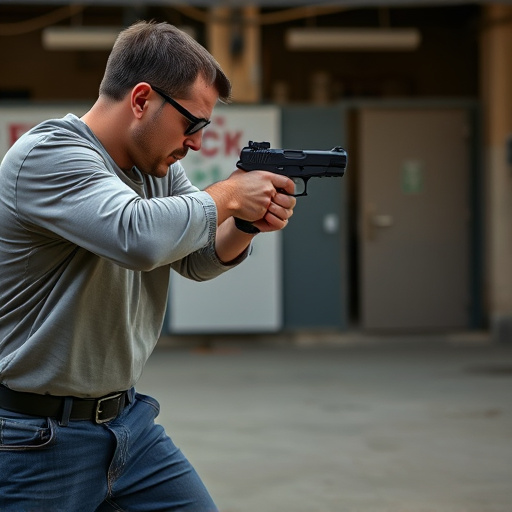
When selecting a concealed carry stun gun, several factors come into play to ensure its effectiveness and your safety. One of the primary considerations is the weapon’s power and voltage. Stun guns deliver an electric shock that disables an assailant temporarily, so higher voltage models are generally more powerful and efficient. However, balance is key; extremely high voltages might increase the risk of accidental shocks or cause excessive pain, which could be problematic in close-quarters self-defense scenarios.
Another crucial aspect to consider is the stun gun’s range and accuracy. Concealed carry implies that you’ll need a weapon you can rely on at close range. Look for models with adjustable stun settings to match various situations. Compact size and ergonomic design are essential for ease of carry, especially if you plan to keep it in a holster or pocket. Additionally, checking state and local laws regarding stun guns is vital to ensure compliance and avoid legal issues. Among the best concealed carry stun gun models, those with a balanced power output, accurate delivery, and a comfortable grip stand out as ideal choices for self-defense enthusiasts.
When it comes to self-defense, both projectile and contact stun weapons offer unique advantages. Projectile weapons provide a non-lethal option with a longer range, while contact stun guns are more immediate and reliable in close-quarters situations. In the market for a concealed carry stun gun, understanding these distinctions is key to choosing the best model among popular concealable options. Consider factors like power, ease of use, and legal considerations to make an informed decision regarding your personal safety.
